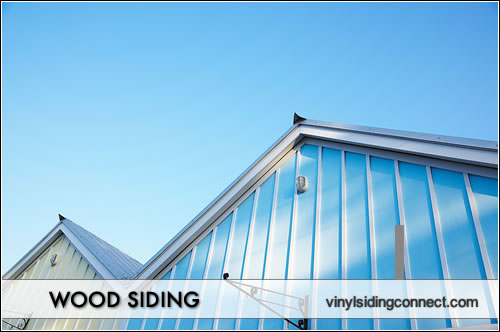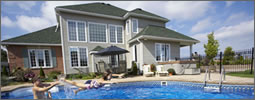Wood siding can be a great exterior cladding that offers lots of beauty and benefits. Of course, wood siding also requires a lot more maintenance than engineered wood. Discover the benefits, costs, options and also the downsides of this traditional cladding material.



Wood Siding Prices
Entry/Mid Range Price: $3.25 – $6.00 psf
Homeowners should expect to pay $325 to $600 per square installed.
Mid To High End Price: $6.00 – $8.00 psf
Homeowners should expect to pay 6500 to $850 per square installed. Discover more on wood siding cost.

Wood Siding Benefits

Attractive Exterior
Wood siding has lots of charm that fits in well in areas surrounded by trees and nature. Of course, many homeowners in the suburbs find wood cladding a wonderful choice as well. Real wood siding has a natural beauty that certain homeowners insist on for its authentic and textured look and feel. It is available in many different species that include spruce, pine and cedar – most commonly with cedar shingles. Homeowners can place the cladding on their entire home or as accent on one or more sections of their house. Wood siding looks fantastic on a variety of home styles such as moden, contemporary, victorian, craftsmen and colonial.

Natural Insulator
Wood is obviously a natural material that serves as a great insulator for the home. This is certainly one factor that sets it apart from, say, vinyl siding. This works to keep a home warmer in the cold winter season and cooler during the hot summer season. The result is lower energy cost, which can add up to real savings over the life of the wood siding.

A Green Cladding
Wood siding is considered a green vinyl siding because wood is a renewal material that helps to cut down on the carbon footprint in comparison to other products. Using this cladding help reduce waste since any untreated wood scraps can be shredded up and used in mulch or to heat the home in the cold months. In addition, lower energy bills means less consumption of fossil fuels such as oil and gas.

Disadvantages

Prone To Insect And Weather Damage
Woods is prone to both insects and damage from the elements. This is why most wood siding is treated prior to installation in order to insulate the wood against damage from insects, warping and rotting from the elements. Many of the stains and oils can affect the color of the wood siding (making it look much darker), which can take away from its natural beauty. The stains or oils must be reapplied every 5 or 6 years to help protect the siding and maximize how long it protects the home. Ask several professional contractors for recommendations on the best treatment methods and materials for the particular wood that you end up using.

Maintenance
Wood siding requires much more maintenance, such as treating the wood discussed above, to effectively protect it and insure adequate longevity. In addition to treating the wood, homeowners should clean the material with a hose to clean off dirt and other caked on debris that may accumuate over time. Wood siding that is not properly cared for will begin to show its age after only 6 or 7 years.
Related Topics
Shake Shingle
Board and Battens
Project Costs & Prices
Cedar Siding Calculator




